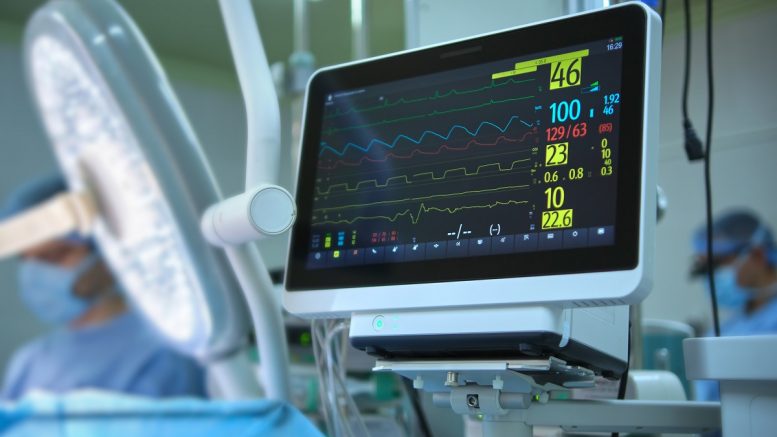Medical devices are highly regulated for a good reason. Patients can’t simply return a defective product — many devices are implanted, and their failure can negatively affect patient function or survival. Manufacturers must get it right the first time. In 2022, the U.S. Food and Drug Administration (FDA) released new guidelines for electromagnetic compatibility (EMC) in medical devices to ensure patient safety.
Medical Devices: Examples and Definition
The FDA defines medical devices as anything that helps diagnose, treat, cure or prevent diseases. The definition also includes anything that physically alters bodily functions without using chemical action. A medical device can be used internally or externally, and either a patient or a doctor can control the device. It must serve a medical — rather than cosmetic — function.
Therefore, examples of medical devices include pacemakers, artificial hips, tongue depressors, continuous glucose monitors and prosthetic arms. Even needles count as medical devices under the FDA’s definition. Analysts predict that in 2023, the global medical device market will be worth $470.6 billion, with cardiology devices generating 14% of the total revenue.
Explaining Electromagnetic Compatibility
Electromagnetic compatibility (EMC) is the ability of electronics to function near other electronic devices. For example, a pacemaker doesn’t react to the presence of a cell phone, nor does wearing a pacemaker affect a patient’s ability to talk on the phone. Although both devices use electrical circuits to function, they don’t interfere with each other.
Thorough EMC testing ensures electronic devices do not emit electromagnetic interference (EMI) or receive it in such a quantity that they behave differently. Meeting EMC medical standards is crucial when designing, testing and marketing medical devices. That’s because device failure could strongly impact a patient’s quality of life.
Examples of medical devices subject to rigorous EMC testing include glucose monitors, hearing aids, defibrillators and diagnostic equipment. Researchers test them for three main qualities — emissions, immunity and susceptibility:
- Emissions: How much energy a device releases into its environment
- Immunity: How well it can function in the presence of EMI
- Susceptibility: How likely it is to fail in the presence of other electronics
Testing looks for surge immunity, harmonic performance, radiated emissions and flickers, among other behaviors.
The 2022 FDA Guidelines
The Electromagnetic Compatibility (EMC) of Medical Devices replaces the 2016 document on the same subject. It refers to electrically-powered medical devices or those which have functions or sensors using electronic circuitry.
The 20-page document tells manufacturers to outline the level of care patients must take and which types of electromagnetic disturbances can occur in particular environments. The guidelines help manufacturers meet the IEC 60601/80601 series of standards, which refers to any medical devices that directly apply or transfer energy to a person. The document also helps manufacturers meet the IEC 61010-1 standard, which applies to electrical laboratory equipment.
The guidelines recommend manufacturers use observable, quantitative, device-specific EMC pass/fail criteria. The FDA document cites this as fundamental to assessing the validity of EMC testing and determining product safety.
The FDA requires manufacturers to affix warning labels to medical devices if they are unsafe to use in an MRI machine. The guidelines point out that in addition to MRI machines, devices may be exposed to cell phones and tablets, so manufacturers should test them around these everyday household items.
Electromagnetic Compatibility (EMC) of Medical Devices makes several recommendations for manufacturers about listing device characteristics, including:
- A description of the power supply, including if patients can use the device while it charges.
- A description of any wireless technology.
- An overview of the device, including block diagrams, functions, modes, relevant accessories, cables and device interoperability.
- Photographs of the device and accessories.
- Whether the device contains any intentional radiofrequency emitters that could cause electromagnetic interference.
The document also tells manufacturers to specify which environment the device should be used in — is it intended for use in a professional health care facility, home setting or special environment? It gives examples of medical devices’ potential locations.
For the professional health care facility environment, it lists surgical centers, laboratories, clinics, dental offices, nursing homes and hospital facilities, among others. In addition to houses, the home health care environment includes restaurants, stores, schools, outdoor environments and any other public place. Special environments include health care facilities with MRI machines or other high-powered medical equipment, military areas, heavy industrial plants and aircraft environments. Devices rated for these areas must not interfere with planes, helicopters, submarines, radar installations or weapons control systems.
EMC in Medical Devices Is Crucial
Electromagnetic compatibility ensures electronics don’t fail when exposed to energy-emitting devices. Medical EMC testing is especially important because patients’ lives are on the line. Thanks to the FDA’s new 2022 guidelines, medical devices are subject to rigorous testing for EMC, protecting patients against electromagnetic interference that could cause device failure.
By Shannon Flynn, ReHack





